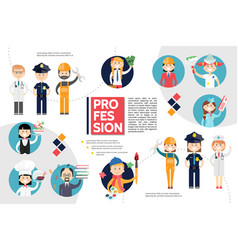Learn More About The Ways In Which Seasonal Elements Can Influence The Success Of Industrial Outside Paint And Identify The Best Times To Accomplish Lasting Results For Your Project
Learn More About The Ways In Which Seasonal Elements Can Influence The Success Of Industrial Outside Paint And Identify The Best Times To Accomplish Lasting Results For Your Project
Blog Article
Write-Up Developed By-Burnham Skafte
When you're intending an industrial outside paint task, seasonal factors can make or break your results. You'll wish to think about just how temperature and moisture effect paint application and drying times. Picking the appropriate season can ensure your paint sticks properly and lasts much longer. However which periods are genuinely the best for this type of job? Allow's discover the key elements that can influence your project's success.
The Effect of Temperature on Paint Application
When you're intending an industrial outside painting project, the temperature level can substantially affect just how well the paint sticks and dries out.
Preferably, you want to repaint when temperatures range in between 50 ° F and 85 ° F. If it's also cold, the paint may not heal appropriately, bring about problems like peeling off or splitting.
On the flip side, if it's as well hot, the paint can dry also quickly, protecting against appropriate bond and causing an irregular finish.
You should likewise consider the moment of day; morning or late afternoon uses cooler temperatures, which can be much more favorable.
Constantly examine the producer's suggestions for the particular paint you're utilizing, as they frequently provide assistance on the perfect temperature level variety for ideal outcomes.
Humidity and Its Effect on Drying Times
Temperature isn't the only environmental factor that influences your industrial external painting job; moisture plays a substantial role too. High moisture degrees can decrease drying times substantially, impacting the general quality of your paint work.
When the air is saturated with wetness, the paint takes longer to heal, which can cause problems like inadequate adhesion and a higher danger of mildew growth. If you're repainting on a specifically humid day, be prepared for extensive wait times between layers.
It's crucial to keep an eye on neighborhood climate condition and strategy accordingly. Preferably, go for humidity degrees between 40% and 70% for optimal drying out.
Keeping these factors in mind guarantees your job remains on track and provides a lasting coating.
Best Seasons for Commercial Outside Paint Projects
What's the most effective time of year for your commercial outside painting projects?
Spring and early fall are usually your best options. Throughout these periods, temperatures are mild, and moisture levels are frequently reduced, creating excellent conditions for paint application and drying out.
Avoid summertime's intense heat, which can trigger paint to completely dry too swiftly, leading to bad attachment and coating. Likewise, wintertime's chilly temperature levels can prevent appropriate drying and curing, taking the chance of the longevity of your paint work.
Go for just click the next post with temperature levels between 50 ° F and 85 ° F for ideal results. Bear in mind to examine the regional weather prediction for rain, as wet conditions can wreck your task.
Preparation around these elements ensures your paint project runs smoothly and lasts longer.
Verdict
Finally, planning your industrial outside painting jobs around seasonal considerations can make a considerable difference in the outcome. By scheduling work during the ideal temperature levels and humidity levels, you'll guarantee much better adhesion and drying times. Keep in interior painting company to keep an eye on neighborhood weather report and pick the right time of year-- spring and very early fall are your best choices. Taking these actions will certainly help you accomplish a durable and expert finish that lasts.
